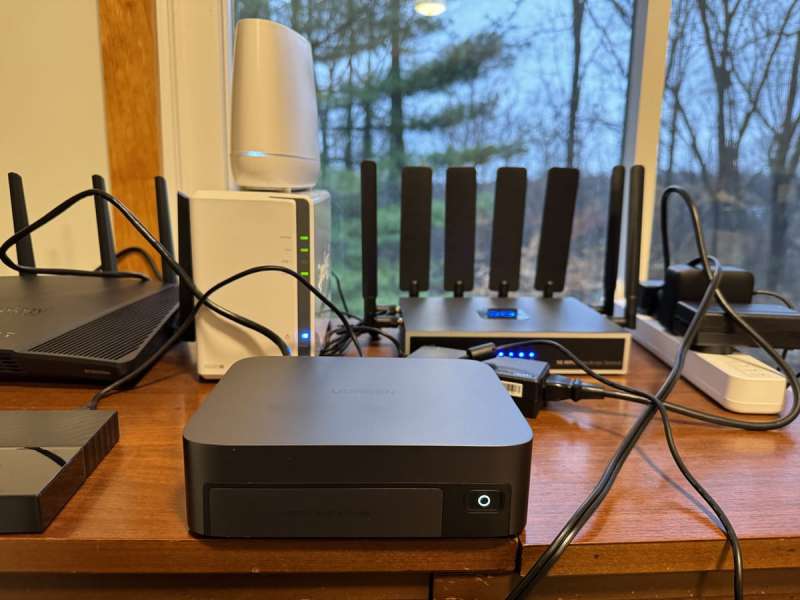
CROWDFUNDING REVIEW – Having backups of our important digital files is something we should make a priority. Losing all your family photos due to a hard drive failure on your ancient desktop computer is a heartbreak you can avoid by implementing a backup process. NAS devices are a great backup solution, and today I want to tell you about the UGREEN NASync DXP480T Plus NAS device, which is one of the new devices in the lineup of new NAS products that Ugreen has launched today on Kickstarter. Let’s check it out.
What is it?
The UGREEN NASync DXP480T Plus NAS device is a NAS device. NAS stands for Network Attached Storage which is basically a hard drive or collection of hard drives (RAID) that is connected to your local network so that all of the devices on your network have access to it either wirelessly or via Ethernet. However, the Ugreen NASync DXP480T Plus is designed to use SSDs instead of traditional hard drives.
Why are NAS devices great? You can use a NAS to create your own private cloud storage system that doesn’t require a monthly subscription.
What’s included?
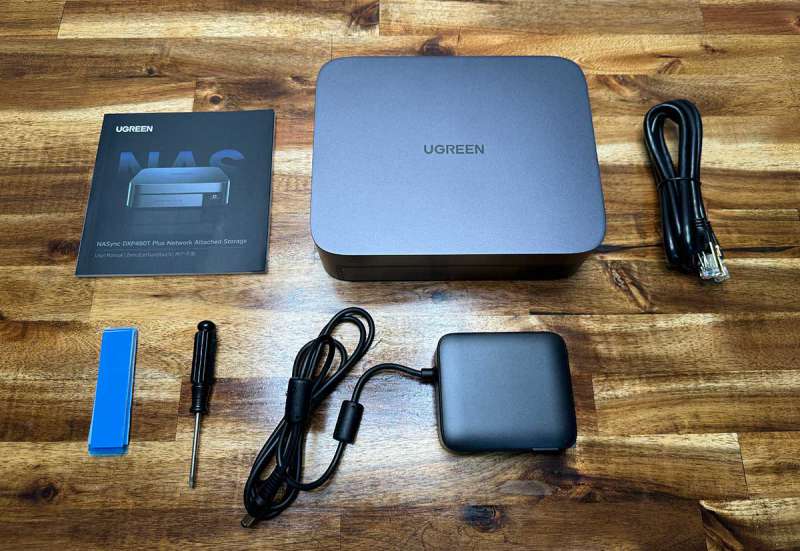
- UGREEN NASync DXP480T Plus NAS device
- AC power adapter
- Ethernet cable
- Screwdriver
- Silicone thermal pad strips
- User manual
Tech specs
Click to expand
Operating system – UGOS Pro
CPU Model – 1235u
CPU Brand – Intel
CPU Architecture – 12th Generation Intel® CoreTM i5 10 Cores 12 Threads
Memory (RAM) – 8GB DDR5
ODECC – Supported
Expandable RAM (max) – 64GB
Flash Memory (System Disk) – SSD 128GB
SATA Drive Bays – N/A
M.2. SSD Drive Slots – 4
RAID – JBOD/Basic/RAID0/1/5/6/10
Maximum Storage – 4T*4
LAN Ports (RJ45) – 10GbE*1
PCIe Expansion – N/A
ThunderboltTM 4 Ports – 2*TBT4
USB 3 – Rear panel: 1*USB3.2 Gen2,theoretical rate up to 10Gb/s
USB 2 – N/A
SD Card reader – N/A
HDMI – 8K
WiFi- Built-in
Design and features
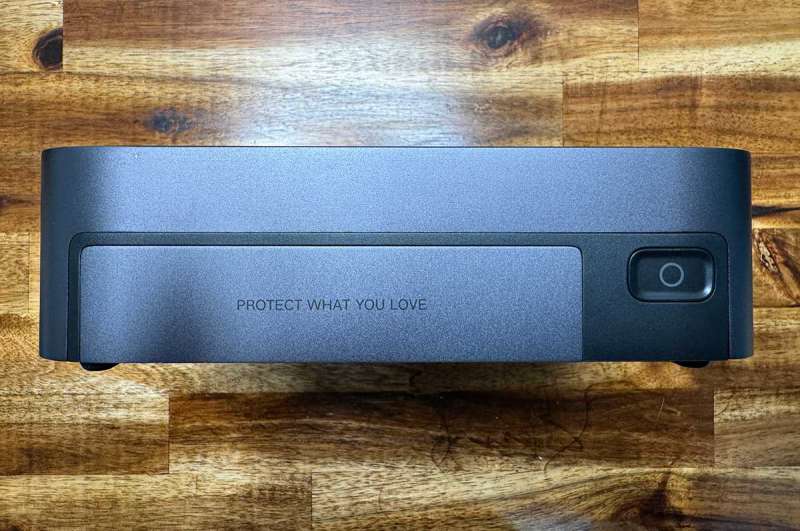
The UGREEN NASync DXP480T Plus is the smallest and most portable NAS device in the new line up of NAS devices that UGREEN has announced/launched today on Kickstarter. It has a sleek design with a space grey aluminum housing with a simple power button on the front. Although it looks like there’s a hard drive bay on behind the PROTECT WHAT YOU LOVE label – which I wish they wouldn’t have put on there, it’s not a bay.
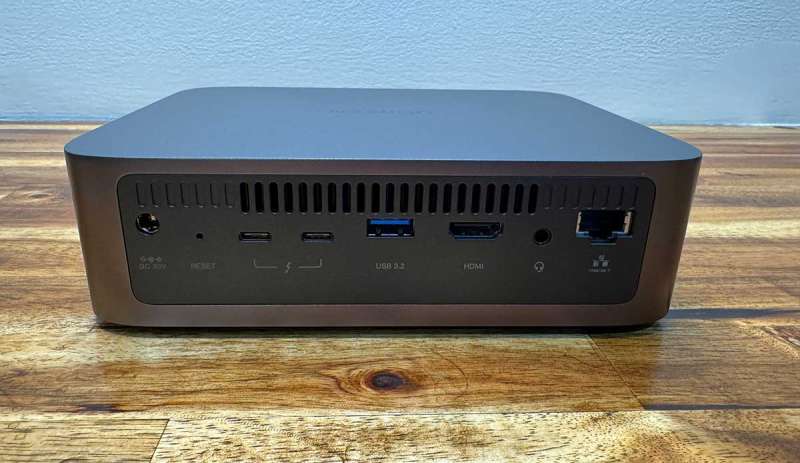
The ports are located on the back and include the AC adapter port, reset switch, 2 USB-C ports, USB 3.2 port, HDMI port, earphone jack, and Ethernet port. You’ll also notice open slots above the ports, which allow heat to escape.
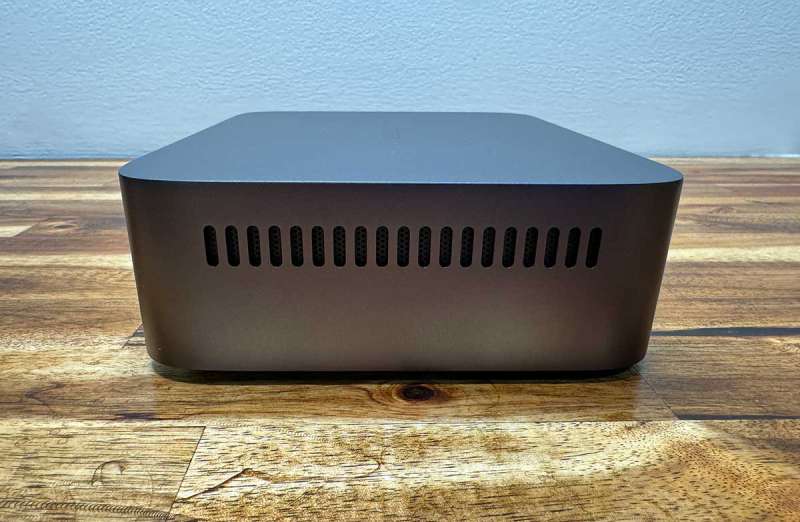
There are also matching slots on the sides of the UGREEN NASync DXP480T Plus NAS device.
Assembly, Installation, Setup
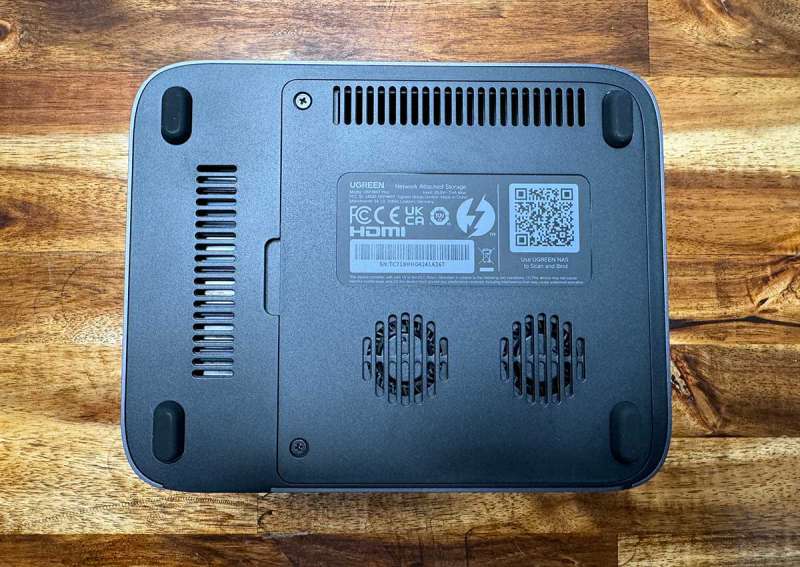
The guts of the UGREEN NASync DXP480T Plus are accessed through an access panel on the bottom of the unit, which I held in place with two screws.
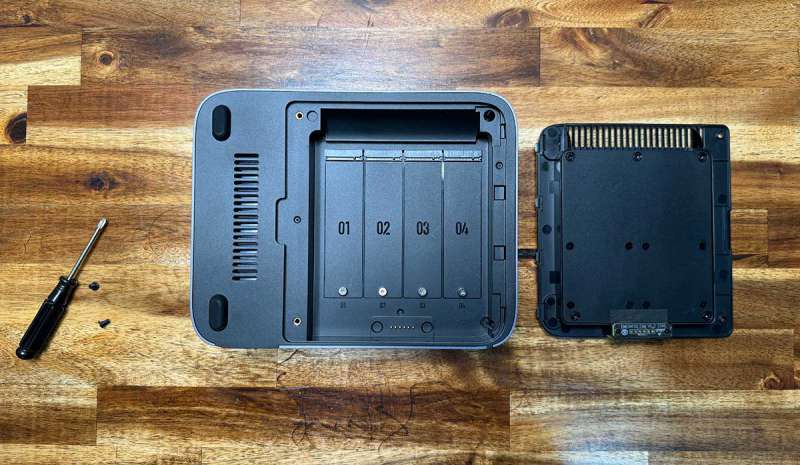
As mentioned previously, this NAS does not use traditional hard drives. When you remove the back panel, you’ll be greeted with 4 M.2 SSD slots when you remove the access panel. Ugreen provided me with four 1T Samsung M.2 SSD sticks to test with this NAS.
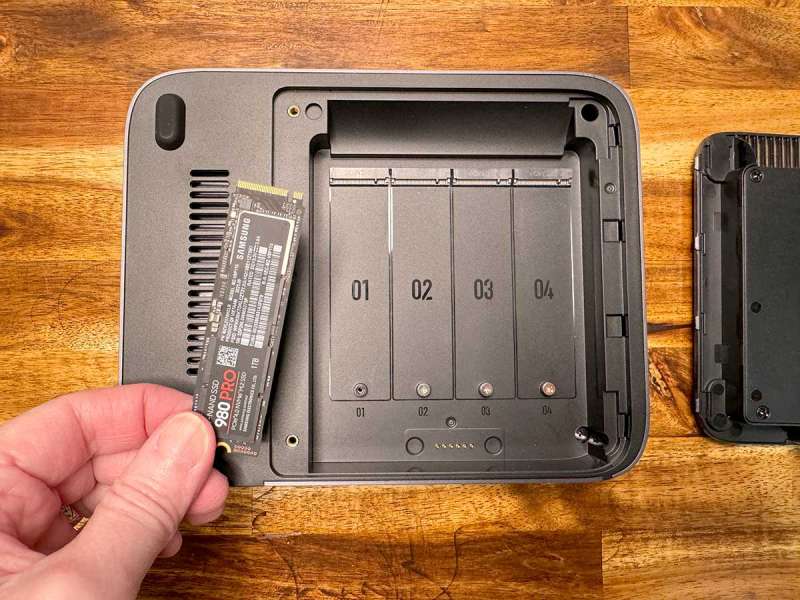
Installing the SSDs is simply a matter of plug-and-play.
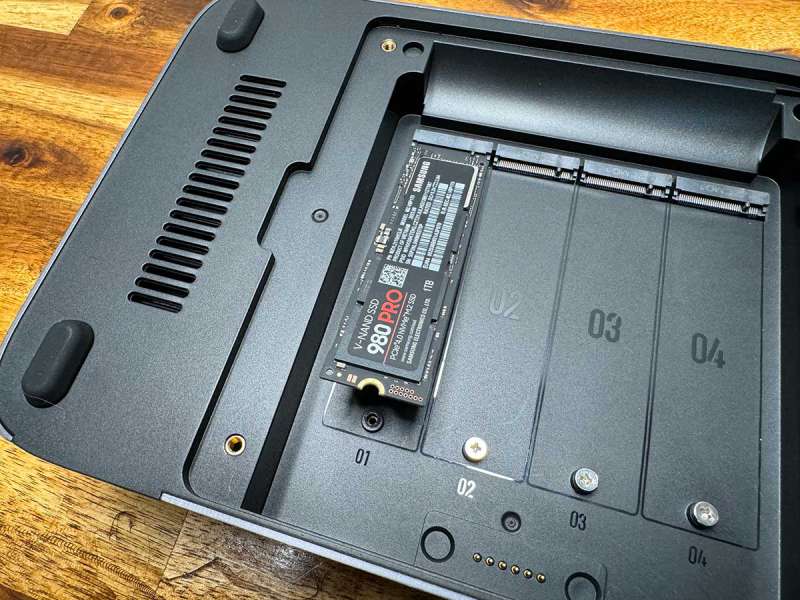
There’s no way you can screw up the installation of the SSDs because each stick can only go in one way into the card slot.
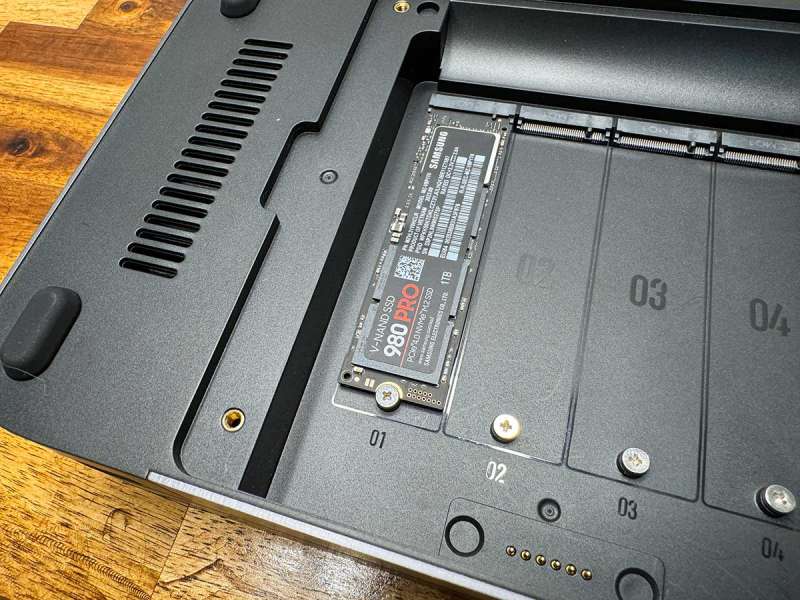
A small Phillips screw holds the SSD securely in place.
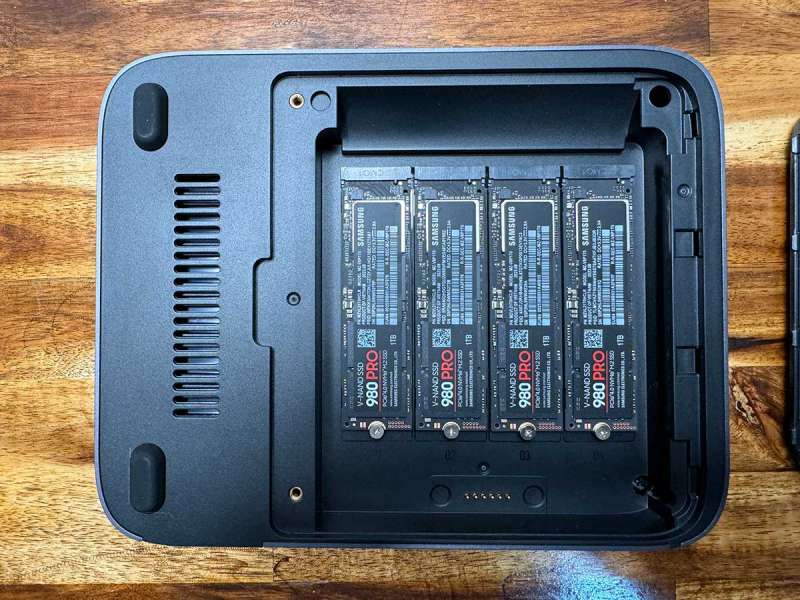
Once all the SSDs are installed, the next step is to apply the included silicone thermal pad strips to each SSD.
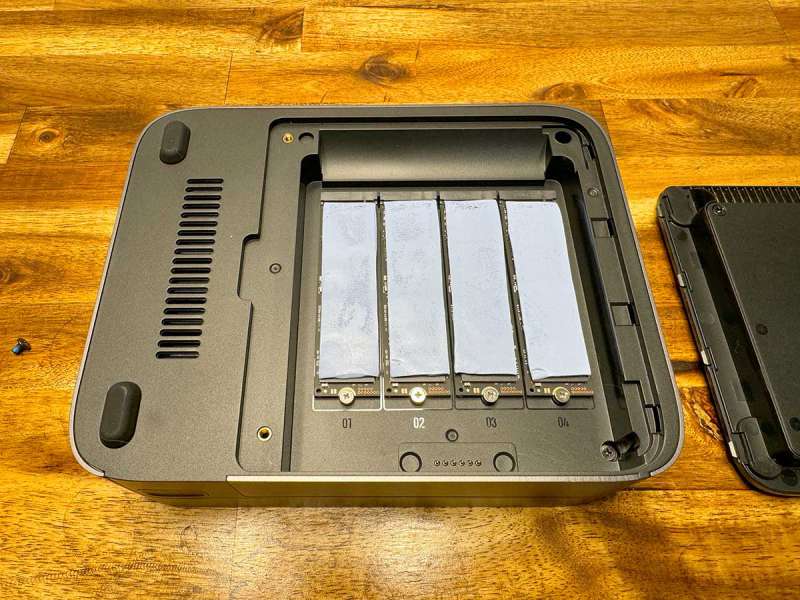
Be careful to stick the thermal pads in place, and remember to remove the clear plastic strips on top of each pad before screwing the access panel back on the back of the NAS.
NOTE: You can also add additional memory to the UGREEN NASync DXP480T Plus NAS device. The instructions show that you can remove the whole SSD tray to find memory slots under it. I tried to remove the tray, but I could not get it to unclip and was afraid that I might damage something, so I gave up trying to access it. Here’s a page from the manual so you can see more about it.
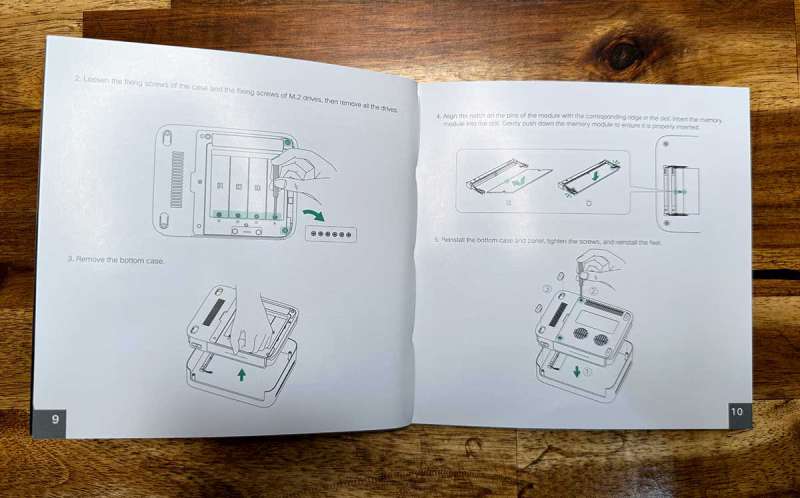
The next step is to connect the UGREEN NASync DXP480T Plus NAS device to your local network and turn it on. I plugged the DXP480T Plus into my Synology RT6600AX router.

From here, you have three options for connecting to the NAS. You can use the web, an iOS or Android app, or an app on your Windows PC or macOS computer.
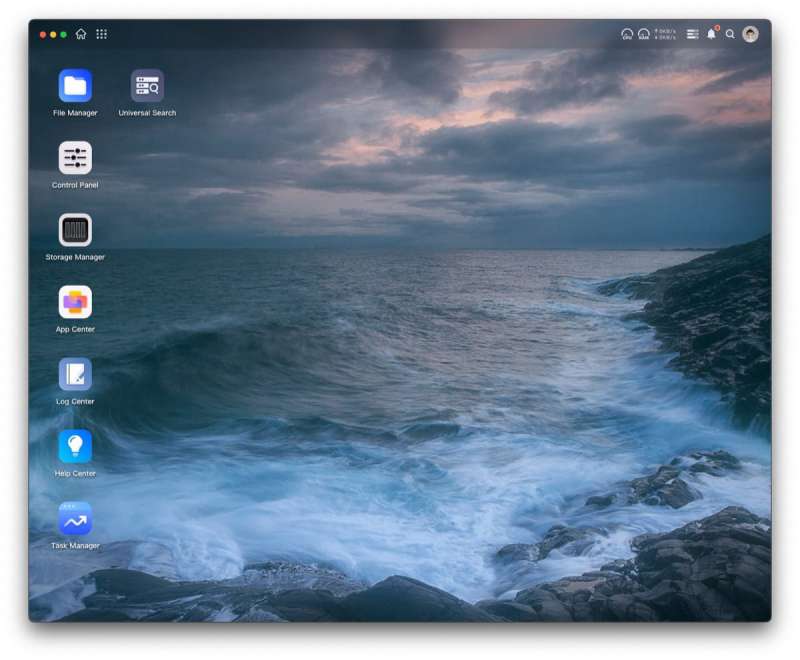
I started out installing the UGREEN NAS app on my MacBook. When I launched the app, it immediately scanned my local network, found the device, and started the setup process, which consisted of creating a user account.
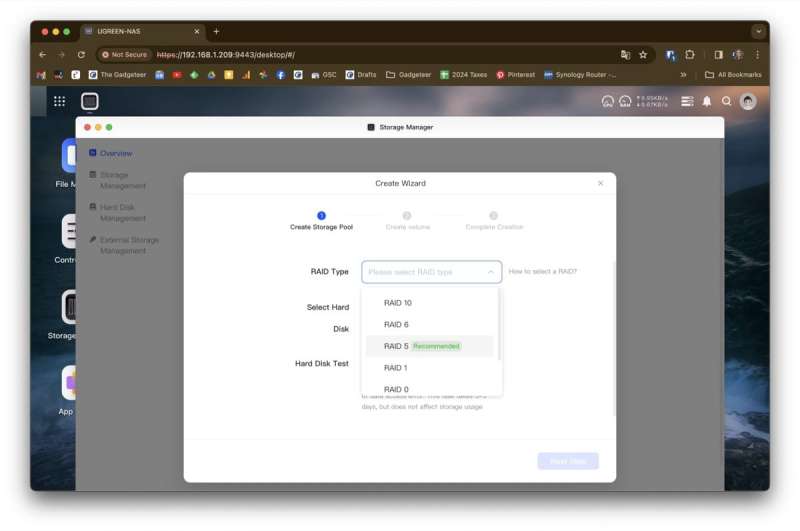
Then, I created the storage pool by selecting the recommended RAID type.
I went with all the defaults and had everything set up within a few minutes.
After the NAS is on your network and you’re connected through the app, you can use it as a simple backup system for folders on the computers on your network.
I tested this by setting the DXP480T Plus to back up the photos on my MacBook. It took a little while for it to copy all the files to the NAS because my MacBook was not directly (Ethernet) connected to the network. It did all the copying via WiFi. But it worked and worked well.
I did the same thing using my iPhone and the UGREEN iOS app. It took quite a while to copy over 11,000 images from my iPhone to the NAS, but it worked fine.
Additional feature through apps
The UGREEN NASync DXP480T Plus NAS device can do more than just back up the files on your phone and computers. You can install a selection of apps that provide extra functionality.
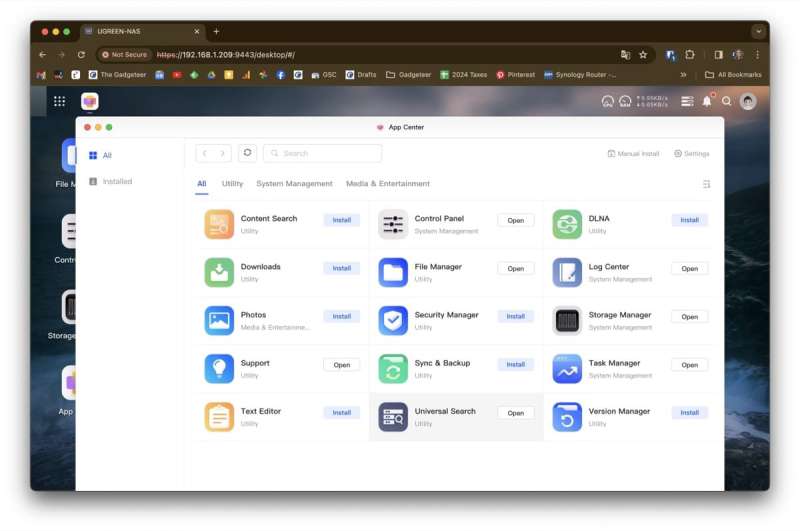
The selection at launch includes the apps you see in the image above. As mentioned, I tested the Sync & Backup app. I also tested the Content Search app, which allows you to search the NAS for files based on file names, and Universal Search app.
There is also a Photos app that you can set up to create albums and search through images based on person, place, and even text found inside the images.
I found that the Photos app can be a bit sluggish, but I attribute that to the fact that this app is still a work in progress and it could be due to it processing all my photos. I’ll update this review if I find this changes with time.
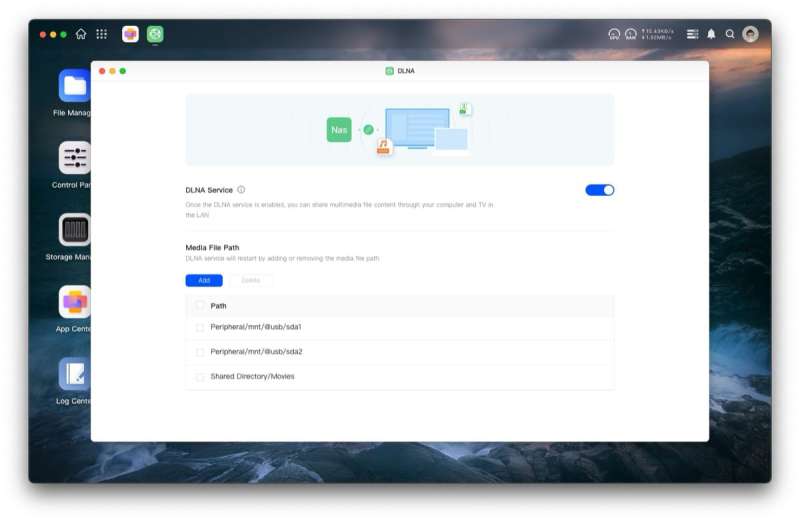
My favorite app so far is the DLNA app, which turns the UGREEN NASync DXP480T Plus NAS device into a media server. You can specify which folders are accessible from other devices. You can also plug an external drive into the back of the DXP480T Plus, and the files on that drive will also be accessible from other devices.
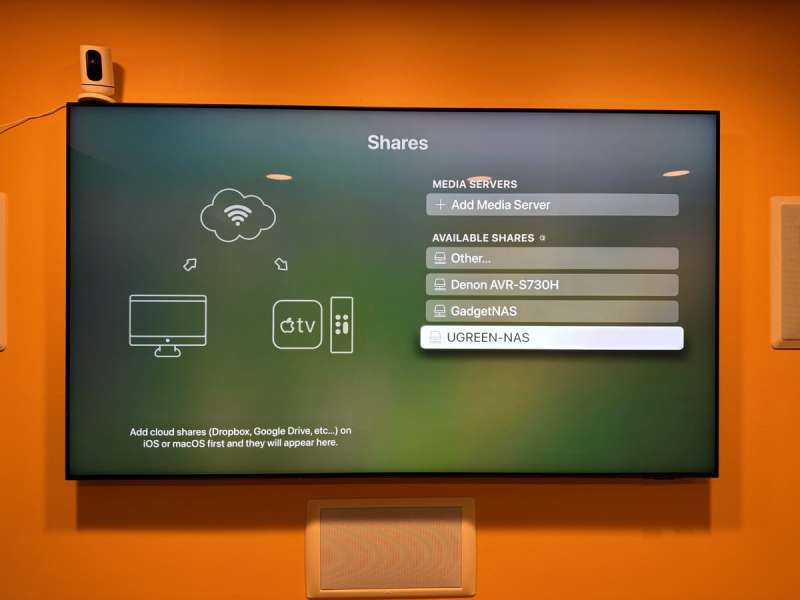
I installed the free video player app Infuse on my AppleTV. It was super simple to set up, and it instantly found the NAS devices on my network and all the video files. It even presents everything in a really nice format with movie posters and details. I don’t want this to turn into a review about Infuse, so let me know if you’d like me to take a look at these types of apps for future reviews.
UGREEN has stated that they plan to have a Music app at some point that will let you use the NAS as a music streaming device.
Performance
I’ve been happy with the performance of the UGREEN NASync DXP480T Plus NAS device after just a couple of days of using it.
99% of the devices on my network are wireless and this NAS still works perfectly. My favorite feature is using the DXP480T as a media server for my AppleTV. I’ve had no issues streaming movies from the DXP480T itself and a USB hard drive attached to it.
What I like about Ugreen NASync DXP480T
- Easy setup
- Multiple connection options (web, desktop app, mobile app)
- Multiple apps for extra functionality
- Private cloud storage without monthly fees
What needs to be improved?
- Photos app is slow and freezes
Final thoughts
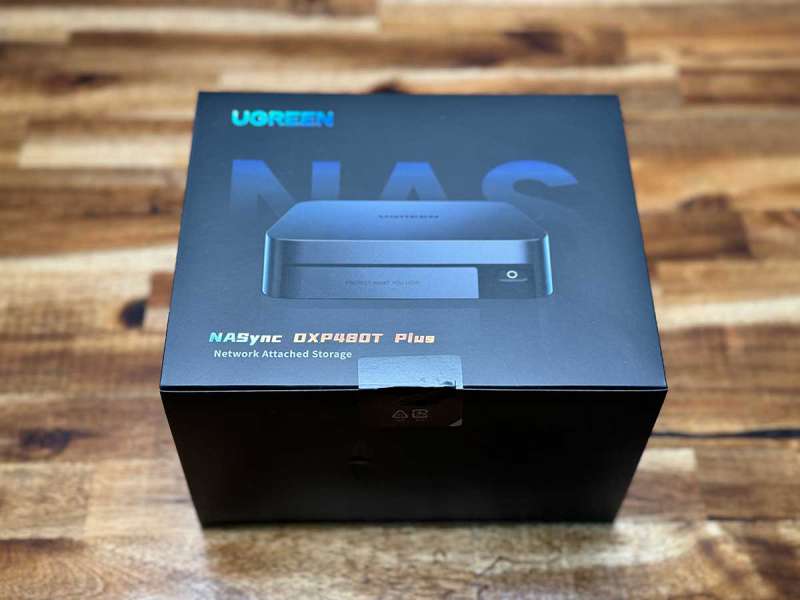
NAS devices don’t have to be gadgets that only nerds and geeks add to their home network. There’s nothing intimidating about the UGREEN NASync DXP480T Plus NAS device. From the ease of installing M.2 SSDs, connecting it to your network, and expanding its functionality with apps, the UGREEN NASync DXP480T Plus NAS device is a quality NAS that anyone can add to their network for backing up files and more.
Price: $479.99 Early Bird Pricing ($799.99 when it goes to retail)
Where to buy: Kickstarter
Source: The sample of this product was provided for free by Ugreen. Ugreen did not have a final say on the review and did not preview the review before it was published.

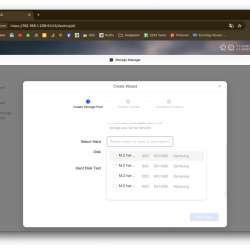
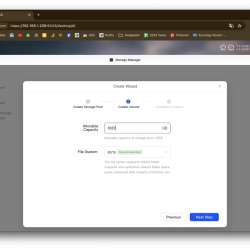
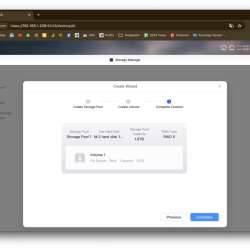
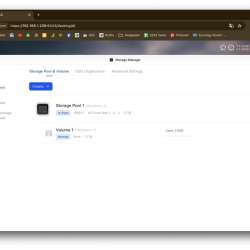

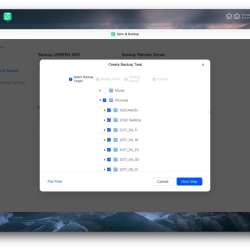
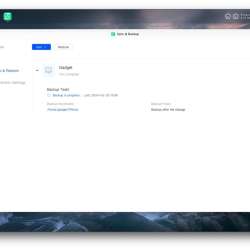
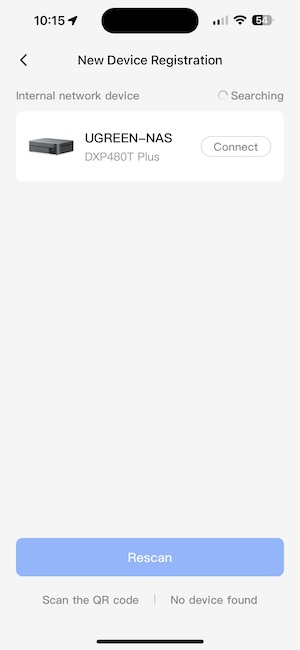
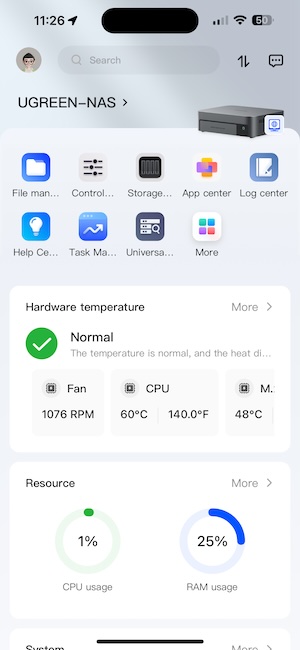
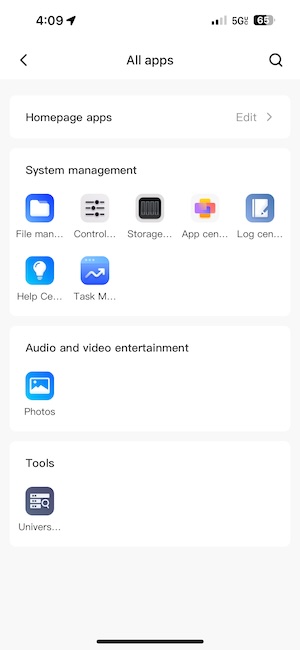



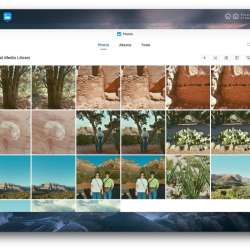
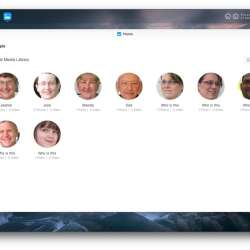


Gadgeteer Comment Policy - Please read before commenting
not very useful…. no specs on the m.2 slots. no test of TB4 through-put. no test of 10Gbe throughput. Feels like a paid advertisement with some lovey pictures.
Sang, I’m sorry that my review lacks the info that you need. I am relatively new to NAS devices. I was not sure how to test the port speed on the NAS itself due to the fact that everything on my network is wireless including the AppleTV, and MacBooks.
May I point out, we don’t do -any- paid advertisement reviews.
Please remember that just one local backup is not the safest way to prevent data loss. It is also advised to do some kind of off-site and encrypted backup, to prevent all your data from being lost in case of a fire, burglary, etc. Periodically creating encrypted backups on an external harddrive and storing it in a friend’s house is a cheap option. Or have a VPN to friends’ house and store your encrypted data on their NAS/server and vice versa. Personally, I have timed scripts on all of my machines to make incremental backups to my local server, which encrypts everything with AES256 and stores it in very affordable cloud storage (5 TB for $50/year).
Hi Robert,
Where can I get 5TB for $50 /year?
thanks
Frank
I looked it up and the numbers are a bit (but not much) different. I got an MS 365 Family subscription for EUR 50 (special offer, normally around EUR 70). That is for 6 users with each their own OneDrive of 1 TB. So it is actually 6 TB in total. I use 3 accounts for all of our phones and 1 “system” account for the described backup mechanism.
Hi Julie; This is what I have been looking for in a NAS Device. How much is one – “1T Samsung M.2 SSD sticks” you tested? I have never done anything with Kickstarter but I understand it is a pledge if they meet their funding goal by deadline. Only I don’t understand how that lets me get my hands on one of these units. Good review and the photos are great. Thank you. Dave T.
This isn’t the pro version, but you get the idea:
https://www.amazon.com/Technology-Intelligent-Turbowrite-MZ-V8V1T0B-AM/dp/B08V83JZH4/?th=1
I am curious about connectivity outside the house. It would be amazing to have a web front end that is cloud hosted with a wiregaurd VPN into the NAS. That way you could use it in and outside of the home.
Any idea how much power it uses? I would like to see what a killawatt shows for power use
Jonah what state(s) do want to know the power draw? I think I have a kilowatt meter somewhere around here.
Nice and informative. Thank you.